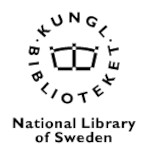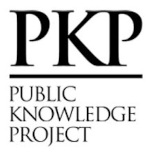Representations of dating apps for Brazilian users
DOI:
https://doi.org/10.5020/23590777.rs.v23i4.e14042Keywords:
dating apps, virtual relationships, PsychologyAbstract
The objective of this study was to investigate representations of dating apps for Brazilian users, and whether there were differences regarding sex, sexual orientation and age. It had quantitative and qualitative approaches. Instrument used for data collection was an online questionnaire. Spontaneous responses brought up representations linked to unspecified relationships, feelings of discomfort or suffering, and practicality. Most prevalent closed-question representations were practicality, getting initial information before meeting people and searching for a stable love relationship. Establishing a long-term relationship was more prevalent in women and heterosexuals in general; aiming for sex was more prevalent in men and homosexuals, and living veiled experiences that cannot be openly experienced in face-to-face life was more prevalent in homosexuals. There were little statistically significant differences related to age. Despite changes in contemporary love relationships, traditional social representations are still in place: linked to the search for an ideal partner (women) and for sex and a transgressive jouissance (men). Apps reflect search for practicality and utilitarianism of postmodern capitalism in large cities, but also fun and pastime.
Downloads
References
Andrade, D. S. V. (2016). Solteiras/os procuram? Sobre sexualidade e solteirice em Salvador. Revista Feminismos, 4(2/3). https://periodicos.ufba.br/index.php/feminismos/article/view/30220.
Bardin, L. (2013). L’analyse de contenu (2d ed.). PUF.
Bauman, Z. (2003). Liquid love: On the frailty of human bonds. Polity Press.
Biasus, F., Demantova, A., & Camargo, B. V. (2011). Representações sociais do envelhecimento e da sexualidade para
pessoas com mais de 50 anos. Temas em Psicologia, 19(1), 319-336. http://pepsic.bvsalud.org/scielo.php?script=sci_
arttext&pid=S1413-389X2011000100025&lng=pt&tlng=pt.
Birman, J. (2011). Mal-estar na atualidade: A psicanálise e as novas formas de subjetivação (8th ed.). Civilização Brasileira.
Blake, K., Portingale, J., Giles, S., Griffiths, S., & Krug, I. (2022). Dating app usage and motivations for dating app usage are associated with increased disordered eating. Journal of Eating Disorders, 10(1), 1-10. https://jeatdisord.biomedcentral.com/articles/10.1186/s40337-022-00693-9
Bryant, K., & Sheldon, P. (2017). Cyber dating in the age of mobile apps: Understanding motives, attitudes, and characteristics of users. American Communication Journal, 19(2). https://www.csus.edu/faculty/m/fred.molitor/docs/cyber-dating.pdf.
Bussinger, R. V. (2013). “Somos ensinados a pensar em sexo”: Representações sociais de masculinidades e de amor em travestis, homens gays e homens heterossexuais. [PhD Thesis], Federal University of Espírito Santo. Repositório
Institucional da UFES.http://repositorio.ufes.br/bitstream/10/1292/6/tese_4498_TESE_CORRIGIDA1%20%281%29.pdf.
Castells, M. (2010). The rise of the network society - the information age: Economy, society and culture – volume I (2nd ed.). Wiley Blackwell.
Cravo, C. L. (2014) Representações sociais de homens e mulheres sobre a solteirice de pessoas com mais de 40 anos. [Master’s Thesis], Federal University of Espírito Santo. http://repositorio.ufes.br/handle/10/3101
Czernecka, J. (2020). Singlehood among young and middle age women in Poland - stereotypes in the mass media vs. single women’s opinions. Revista Feminismos, 7(1). https://periodicos.ufba.br/index.php/feminismos/article/view/35755
Couto, E. S., Souza, J. D. F. de & Nascimento, S. P. (2013, October 10th and 11th). Grindr e Scruff: Amor e sexo na cibercultura. Anais do 3º Simpósio em tecnologias digitais e sociabilidade. Performances Interacionais e Mediações Sociotécnicas. GITS – Research Group on Interactions, Digital Technologies and Society at the Federal University of Bahia/Salvador. http://gitsufba.net/anais/wp-content/uploads/2013/09/13n1_grindr_49464.pdf
Degen, J., Kleeberg-Niepage, A. (2022). The more we Tinder: Subjects, selves and society. Hu Arena, 5, 179–195. https://doi.org/10.1007/s42087-020-00132-8
eHarmony Editorial Team (2017). Future of dating 2050: The impact of a changing society. future foundation. https://www.eharmony.co.uk/dating-advice/dating/future-of-dating-2050/#.Wh_bY4G0O3C
Harrison, M. G., McAnulty, R. D., &Canevello, A. (2022). College students’ motives for in-person meetings with dating
application matches. Cyberpsychology, Behavior, and Social Networking, 25(2), 130-134. http://doi.org/10.1089/
cyber.2021.0031
Holtzhausen, N., Fitzgerald, K., Thakur, I., Ashley, J., Rolfe, M., & Pit, S. W. (2020). Swipe-based dating applications
use and its association with mental health outcomes: A cross-sectional study. BMC psychology, 8(1), 1-12. https://
bmcpsychology.biomedcentral.com/articles/10.1186/s40359-020-0373-1?fd=5317710456904024|5456507360795513
&lp=/dating-apps-mental-health
Illouz, E. (2019). Emodities o la invención de los commodities emocionales. In: E. Illouz (Coord.), Capitalismo, consumo yautenticidad: Las emociones como mercancía. (pp. 1-41). Katz.
James, J. L. (2015). Mobile dating in the digital age: Computer-mediated communication and relationship building on tinder. [Master’s thesis], Texas State University, San Marcos, Texas. https://digital.library.txstate.edu/handle/10877/5529
Kehl, M. R. (2002). Sobre ética e psicanálise. Companhia das Letras.
Lacan, J. (2007). Ecrits: the first complete edition in English. W. W. Norton & Company. (Original work published in 1966).
Lacan, J. (2014). The Seminar, book X: Anxiety, 1962–1963. Polity Press.
Lacan, J. (2020). The Seminar, book V: Formations of the unconscious, 1957-1958. Polity Press.
Lasch, C. (1991) The culture of narcissism: American life in an age of diminishing expectations. Norton. (Original work published in 1979).
Lenton-Brym, A. P., Santiago, V. A., Fredborg, B. K., & Antony, M. M. (2021). Associations between social anxiety, depression, and use of mobile dating applications. Cyberpsychology, Behavior, and Social Networking, 24(2), 86-93. https://doi.org/10.1089/cyber.2019.0561
Linne, J. (2020). “No sos vos, es Tinder”. Gamificación, consumo, gestión cotidiana y performance en aplicaciones de
“levante”. Convergencia, 27, e13365. https://doi.org/10.29101/crcs.v27i0.13365
Maia, J., & Bianchi, E. (2013) A caçada começou: Tecnologia de geolocalização em aplicativos de redes sociais gays.
Anais do XXXVI Congresso Brasileiro de Ciências da Comunicação. IntercomBrazilian Society for Interdisciplinary
Communication Studies – Manaus/AM. http://www.intercom.org.br/papers/nacionais/2013/resumos/R8-0411-1.pdf
Maia, J., & Bianchi, E. (2014). Tecnologia de geolocalização: Grindr e Scruff redes geosociais gays. Logos, 2(24). https://doi.org/10.12957/logos.2014.14157
Mezan, R. (2002) Interfaces da psicanálise. Companhia das Letras.
Moscovici, S. (2001). Social representations: Explorations in Social Psychology. New York University Press.
Pommier, G. (2000). Pour l’amour du père et du phallus : L’homosexualité en première ligne. Révue Internationale – La clinique lacanienne: les homossexualités, 4(1). https://www.editions-eres.com/ouvrage/766/les-homosexualites
Ranzini, G., & Lutz, C. (2017). Love at first swipe? Explaining Tinder self-presentation and motives. Mobile Media &
Communication, 5(1), 80–101. https://doi.org/10.1177/2050157916664559
Rosenfeld, M., Thomas, R. &Husen, S. (2019). Disintermediating your friends: How online dating in the United States
displaces other ways of meeting. Proceedings of the National Academy of Sciences of the United States of America,
(36), 17753-17758. https://doi.org/10.1073/pnas.1908630116
Roudinesco, E., & Plon, M. (2006). Dictionnaire de la psychanalyse (3d ed.). Fayar.
Santos, I. C. L. dos (2015). “Mulher Solteira Procura”: Um estudo em torno da solteirice na representação social feminina. Polêm!ca, 14, 01-22. https://www.e-publicacoes.uerj.br/index.php/polemica/article/view/14263
Santos, S. C. dos. (2016, August 3rd to 6th). “Meu Tinder tá bombando!”Geolocalização, sociabilidade e vivências da
sexualidade. Anais da 30ª Reunião Brasileira de Antropologia, Federal University of Paraiba, João Pessoa/PB. http://
evento.abant.org.br/rba/30rba/files/1468606843_ARQUIVO_GT010MeuTindertabombando_Sheila.pdf
Santos, S. C. dos. (2018). Curtir ou não curtir: Experimentações a partir do Tinder. [Master’s thesis], Federal University of Paraiba, João Pessoa/PB https://repositorio.ufpb.br/jspui/handle/123456789/13246
Sevi, B. (2019). The dark side of Tinder. Journal of Individual Differences, 40(4), 242–246. https://doi.org/10.1027/1614-0001/a000297
Silva, K. R., de Andrade-Serejo, R. D., de Souza, G. B. D., & de Souza, J. C. P. (2021). As relações amorosas de jovens
manauenses no aplicativo de namoro Tinder. Research, Society and Development, 10(13), e318101321321-e318101321321. https://doi.org/10.33448/rsd-v10i13.21321
Sumter, S. R., Vandenbosch, L., & Ligtenberg, L. (2017). Love me Tinder: Untangling emerging adults’ motivations for
using the dating application Tinder. Telematics and Informatics, 34(1), 67-78. https://doi.org/10.1016/j.tele.2016.04.009.
Timmermans, E., & De Caluwé, E. (2017a). Development and validation of the Tinder Motives Scale (TMS). Computers in Human Behavior, 70, 341-350. https://doi.org/10.1016/j.chb.2017.01.028.
Timmermans, E., & De Caluwé, E. (2017b). To Tinder or not to Tinder, that’s the question: An individual differences perspective to Tinder use and motives. Personality and Individual Differences, 110, 74-79. https://doi.org/10.1016/j.paid.2017.01.026
Trevisan, J. S. (2004). Devassos no paraíso: A homossexualidade no Brasil, da colônia à atualidade. (6th ed.). Record.
Zapata, I., Vargas, J., & Marín-Cortés, A. (2021). Una revisión de alcance sobre las relaciones entre vínculos sexo-afectivos y tecnologías digitales. Diversitas: PerspectivasenPsicología, 17(2), 20-36. https://doi.org/10.15332/22563067.7075
Downloads
Published
How to Cite
Issue
Section
License
Copyright (c) 2023 Revista Subjetividades

This work is licensed under a Creative Commons Attribution-NonCommercial-ShareAlike 4.0 International License.
Para autores: Cada manuscrito deverá ser acompanhado de uma “Carta de submissão” assinada, onde os autores deverão declarar que o trabalho é original e inédito, se responsabilizarão pelos aspectos éticos do trabalho, assim como por sua autoria, assegurando que o material não está tramitando ou foi enviado a outro periódico ou qualquer outro tipo de publicação.
Quando da aprovação do texto, os autores mantêm os direitos autorais do trabalho e concedem à Revista Subjetividades o direito de primeira publicação do trabalho sob uma licença Creative Commons de Atribuição (CC-BY), a qual permite que o trabalho seja compartilhado e adaptado com o reconhecimento da autoria e publicação inicial na Revista Subjetividades.
Os autores têm a possibilidade de firmar acordos contratuais adicionais e separados para a distribuição não exclusiva da versão publicada na Revista Subjetividades (por exemplo, publicá-la em um repositório institucional ou publicá-la em um livro), com o reconhecimento de sua publicação inicial na Revista Subjetividades.
Os autores concedem, ainda, à Revista Subjetividades uma licença não exclusiva para usar o trabalho da seguinte maneira: (1) vender e/ou distribuir o trabalho em cópias impressas ou em formato eletrônico; (2) distribuir partes ou o trabalho como um todo com o objetivo de promover a revista por meio da internet e outras mídias digitais e; (3) gravar e reproduzir o trabalho em qualquer formato, incluindo mídia digital.
Para leitores: Todo o conteúdo da Revista Subjetividades está registrado sob uma licença Creative Commons Atribuição (CC-BY) que permite compartilhar (copiar e redistribuir o material em qualquer suporte ou formato) e adaptar (remixar, transformar e criar a partir do material para qualquer fim) seu conteúdo, desde que seja reconhecida a autoria do trabalho e que esse foi originalmente publicado na Revista Subjetividades.





















